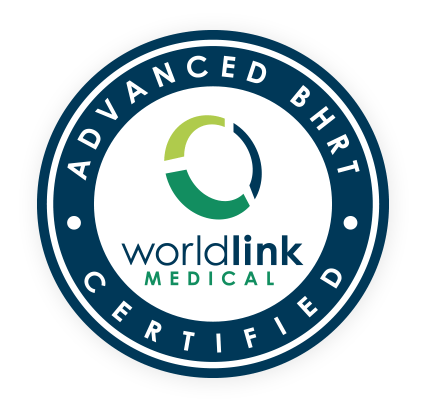ADHD Treatment
ADHD Medications
The pathophysiology of ADHD is complex and involves dysregulation in multiple brain regions and neurotransmitter systems. A comprehensive understanding of ADHD and the effects of medications requires considering the interactions between multiple brain regions and neurotransmitters involved in the disorder.
It's important to note that the choice between stimulant and non-stimulant medications should be based in a comprehensive evaluation by a healthcare professional and individual factors such as the individual's age, symptom profile, medical history, individual response, potential side effects, treatment preferences and the presence of other comorbidities.
At Aspire Medical Group, your provider will work closely with you to determine the most appropriate treatment approach for your specific needs.
ADHD Medications Can Be Broadly Categorized Into Two Main Categories:
1) stimulant medications and 2) non-stimulant medications. The main difference between stimulant and non-stimulant medications used for ADHD lies in their mechanisms of action and the neurotransmitters they primarily affect.
Stimulants
Stimulant medications, such as methylphenidate (Ritalin) and amphetamine-based medications (e.g., Adderall), are the primary pharmacological treatment for ADHD. These medications primarily increase the levels of dopamine (DA) and norepinephrine (NE) in the brain.
Common Stimulant Medications Include:
- Methylphenidate-based medications: Examples include Ritalin, Concerta, Daytrana (patch), and Quillivant XR.
- Amphetamine-based medications: Examples include Adderall, Vyvanse, and Dexedrine.
Mechanism of Action: Stimulant medications work by increasing the levels of dopamine (DA) and norepinephrine (NE) in specific parts of the brain, which helps improve attention, focus, hyperactivity, and impulse control. They do this by promoting the release of these neurotransmitters and inhibiting their reuptake, resulting in increased neurotransmitter availability in the synaptic cleft, the space between neurons. This increased availability of neurotransmitters can enhance signaling and improve the function of certain brain circuits involved in attention and impulse control.
Here's a breakdown of the effects of stimulant medications on DA and NE in the brain regions of interest in ADHD:
- Dorsolateral Prefrontal Cortex (DLPFC): Stimulant medications can enhance DA and NE levels in the Dorsolateral Prefrontal Cortex (DLPFC). This can improve sustained attention, concentration, working memory, impulsivity and executive functions such as time management, organization, planning, and problem-solving.
- Ventromedial Prefrontal Cortex (VMPFC): Stimulant medications can enhance DA and NE levels in the VMPFC. This can improve emotional regulation, impulsivity, and problems with emotional self-control. It may also help individuals interpret social cues, recognize others' perspectives, and engage in appropriate social behaviors.
- Anterior Cingulate Cortex (ACC): Stimulants increase DA and NE in the ACC, which can improve sustained attention, reduce impulsivity, and aid in controlling and regulating behavior, particularly in challenging or conflicting situations.
- Orbitofrontal Cortex (OFC): Enhanced DA and NE in the OFC due to stimulant medication use can help reduce impulsivity and improve the ability to delay gratification.
- Basal Ganglia: Stimulant medications primarily increase DA levels in the basal ganglia, which can lead to improvements in hyperactivity, impulsivity, and problems with motor coordination.
- Medial Prefrontal Cortex (mPFC) and Hypothalamus: While stimulants primarily affect DA and NE levels in the prefrontal cortex, their influence on the hypothalamus is less understood. However, modulation of DA and NE in these regions may have potential benefits in improving depressive symptoms, fatigue, and sleepiness.
- Cerebellum: Stimulants can indirectly affect DA and NE levels in the cerebellum through their effects on other brain regions. This modulation may contribute to improvements in motor coordination and attentional control.
- Default Mode Network (DMN): Stimulants can increase DA and NE levels in the brain regions associated with the DMN, potentially enhancing sustained attention and reducing mind wandering.
- Limbic System: Stimulant medications can enhance DA and NE in the limbic system, which may lead to improvements in emotional regulation, memory, and motivation.
Onset and Duration: Stimulant medications typically have a relatively fast onset of action, with effects occurring within an hour after ingestion. They begin working immediately after crossing the blood-brain barrier, which can take 45 to 60 minutes, at which time hyperactivity, distractibility, and/or impulsivity are reduced. Depending on the formulation, their duration of action can vary from a few hours to several hours.
Efficacy: Stimulant medications, such as methylphenidate (e.g., Ritalin) and amphetamines (e.g., Adderall), are considered the most effective and commonly prescribed treatments for ADHD. They have a high success rate, with around 70-80% of individuals experiencing symptom improvement.
Symptom Management: Stimulant medications primarily target the core symptoms of ADHD, including inattention, hyperactivity, and impulsivity. They can improve focus, attention, and behavioral control.
Potential Side Effects of Stimulants: The most common side effects of stimulants are appetite suppression, sleep disturbances, abdominal pain, tics, mood changes, rebound effect, headache and rare allergic reaction. Also, potential effects on growth in children, neurological and cardiovascular effects during long-term treatment have been reported as well as potential abuse of stimulants in adolescents and adults. It's important to note that not all individuals will experience these side effects, and the severity and frequency of side effects can vary.
It's crucial to discuss any concerns or potential side effects with your healthcare provider. They can provide detailed information about the medications you are considering, monitor your response, and help manage any side effects that may arise.
Non-Stimulants
Non-stimulant medications are an alternative for individuals who do not respond well to, cannot tolerate stimulant medications or have contraindications for stimulant use. They have different mechanisms of action and primarily target the norepinephrine system in the brain.
Common Non-Stimulant Medications Include:
- Atomoxetine: Sold under the brand name Strattera, it is a selective norepinephrine reuptake inhibitor (SNRI). FDA Approved for ages 6 and up in the treatment of ADHD.
- Guanfacine: Sold under the brand names Intuniv (extended-release) and Tenex (immediate-release), it is an alpha-2A adrenergic agonist. FDA Approved for ages 6 and up in the treatment of ADHD.
- Clonidine: Sold under the brand names Kapvay (extended-release) and Catapres (immediate-release), it is also an alpha-2A adrenergic agonist. FDA Approved for ages 6 to 17 in the treatment of ADHD
Mechanism of Action: Non-stimulant medications primarily work by increasing NE levels in the prefrontal cortex, which is involved in executive functions and attention regulation. Non-stimulant medications used for ADHD, such as atomoxetine (Strattera) and certain antidepressants, primarily target the neurotransmitter norepinephrine (NE) and, to some extent, dopamine (DA) in the brain. By increasing NE availability, these medications help modulate attention, impulse control, and executive functions.
Efficacy: While non-stimulant medications may not be as effective as stimulant medications in managing ADHD symptoms they can still be helpful, particularly for individuals who do not respond well to, cannot tolerate stimulant medications or have contraindications for stimulant use.
Symptom Management: Non-stimulant medications primarily target inattention and impulse control. They may be particularly useful for individuals with comorbid conditions such as anxiety, tics, cardiovascular disease or substance abuse.
Onset and Duration: Non-stimulant medications usually take longer to show significant effects compared to stimulant medications. It may take several weeks of consistent use to see improvements. The duration of their effects can vary depending on the specific medication and dosage.
Potential side effects of non-stimulant ADHD medications include:
Gastrointestinal Issues, sleep disturbances, headaches, mood change, decreased appetite, dizziness or lightheadedness, increased blood pressure or heart rate: certain non-stimulant medications can have effects on blood pressure or heart rate and rare allergic reaction.
It's important to discuss any concerns or potential side effects with your healthcare provider. They can provide specific information about the medications you are considering, monitor your response, and help manage any side effects that may arise.
Key Differences Between Stimulant and Non-Stimulant ADHD Medication
- The main advantage that stimulants have over non-stimulants is the ability to directly increase dopamine (DA) in the basal ganglia. The basal ganglia is the sub-cortical brain region that plays a crucial role in modulating motor activity and coordination. By increasing dopamine levels in the basal ganglia, stimulant medications can effectively target symptoms of hyperactivity, impulsivity, and problems with motor coordination commonly seen in ADHD.
- Non-stimulant medications, on the other hand, do not have a direct effect on dopamine levels in the basal ganglia. Instead, they target other neurotransmitters such as norepinephrine (NE) or modulate neurotransmission in different brain regions associated with ADHD symptoms. Although the exact impact of non-stimulant medications on the basal ganglia may be indirect, the modulation of NE and DA systems in other brain regions can have secondary effects on basal ganglia function.
- While non-stimulant medications can still be effective in managing ADHD symptoms, they may have a different mechanism of action and may be more suitable for individuals are not hyperactive, do not respond well to stimulant medications or have contraindications for stimulant use.
Clinical Considerations
- Clinically, there are several aspects that need to be considered before prescribing medicines for ADHD. The most important being age of the patient, severity of the disorder and it’s impact on functioning and the presence of other medical and psychiatric disorders (comorbidities).
- In children < 6 years old, alternative treatments such as cognitive behavioral therapy is preferred while in children, adolescents and adults, a combination of stimulants and cognitive behavioral therapy is commonly used.
- Also, comorbidities can impact the chosen therapeutic approach, i.e. non-stimulants are recommended for patients with pre-existing cardiac disease, patients with substance use disorders are sometimes recommended to use medications with a lower abuse potential such as non-stimulants or Vyvanse (lisdexamfetamine), an amphetamine prodrug that is not active until after it has been absorbed by the intestinal tract and converted to amphetamine (active component) and l-lysine.
- Patients with bipolar disorder taking a stimulant medication are at high risk for mood destabilization. There is also risk for increased tics in tic-disorders by stimulants, therefore, non-stimulants, such as atomoxetine, would be utilized instead.
- Individuals with a history of neurological or cardiovascular disease and/or family history of sudden cardiac death are advised to use non-stimulant medications. If non-stimulant medications are not effective in controlling ADHD symptoms after an adequate trial and the use of a stimulant medication is clinically indicated, additional medical work-up and lab work may be requested at our discretion. ECG screening is required prior to initiation or continuation of stimulant medication if the comprehensive history and physical examination suggests underlying cardiac disease or cardiac risk factors. Urine drug screening will be performed at the initial evaluation.
Interested in our services? We’re here to help!
We want to know your needs exactly so that we can provide the perfect solution. Let us know what you want and we’ll do our best to help.


